The company of the future
AUTHOR Susanne Schröder
(© Hanser/Schröder)
A classic handcraft operation on the way to industrial manufacturing: Karl Walter Formen- und Kokillenbau undergoes restructuring. The owner and consultant explain how the change functions and why "simple tools" are used.
Company
Karl Walter Formen- und Kokillenbau GmbH & Co. KG
Location
Göppingen, Germany
Focus
Establishing an end-to-end process solution
Benefits:
- Tool standardization
- Transparency in planning and manufacturing
- Flexible, well-thought-out processes
Sector
Die manufacturing
Published
2018
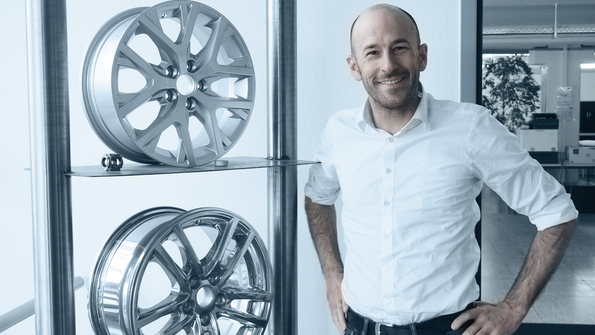
Interviewee: Jens Buchert, Managing director
We wanted more than just a CAM software; we wanted an end-to-end solution. For us, Tebis is a process provider. As far as I know, they are the only provider in the industry from which we can obtain consulting, software and implementation from a single source.
Our programming has also vastly improved. We are now capable of generating run times of up to 30 hours in one stretch.
Dr. Jens Buchert, owner and managing director of Karl Walter Formen- und Kokillenbau GmbH & Co. KG in Göppingen, Germany, arranges pieces of paper on a large architectural drawing. The diagram shows the 3000 m2 production building, with each machine represented by a piece of paper. Here, the building layout is being refined. Wait a minute – weren't we going to talk about the company of the future? Is this really Industry 4.0? Not exactly, but the picture makes sense. Because it describes very well how Walter Formenbau is proceeding – and the restructuring process it is undergoing. Many small steps are necessary to reach the goal, because they are undertaking nothing less than a complete transformation. Jens Buchert and Jens Lüdtke from Tebis Consulting took the Form+Werkzeug magazine editors along on a tour of the plant – and presented their vision for the die manufacturing company of the future.
Background
Walter Formenbau was founded in 1960 and currently has 40 employees. The company is among the leading manufacturers of molds for aluminum hubs and castings for the automotive sector. Various milling and turning machines are operating in the 3,000 m2 production building, including 3- and 5-axis machining centers from Röders, Hermle and DMG Mori. Walter was family-owned for 56 years before Buchert acquired the company in November 2016.
With a doctorate in mechanical engineering, he previously worked in various companies, including automotive manufacturers, software companies, prototype manufacturers and consulting. He has always been interested in manufacturing optimization and Industry 4.0.
So how did he come to buy a die manufacturer? "I want to shape my own future, not just implement other people's decisions. And in Walter Formenbau I saw the opportunity to implement concepts that I had already been thinking about for a long time." The appeal of Walter Formenbau:
- It was a healthy handcraft operation with a good product and customer base.
- The manufacture of gravity die-casting molds entails the construction of very similarly designed parts – an ideal starting point for standardization.
- The dimensions of the modern office building and the production building are designed to enable planning far into the future.
Even before Buchert stepped into the company, he contacted an old acquaintance: Jens Luedtke from Tebis AG In addition to having been colleagues for years at Tebis, the two share a common vision of the ie manufacturing company of the future. As head of Tebis Consulting, Lüdtke has 20 years of experience in the industry. In addition to commercial and production expertise, he has a high degree of process expertise in die, mold and model manufacturing. Buchert discussed with him whether his vision could be implemented at Walter Formenbau. And it quickly became clear: Yes, Lüdtke also saw the great potential. And another yes: If Buchert acquired the company, Lüdtke would provide advice and support. Why did Buchert decide on Tebis Consulting? "I have gotten to know many large consultants during my career," says Buchert. "These people are perfect in business administration. They know right away what happens to the hourly rate if we double our spindle run time. But they can't tell me how to double spindle run time. And that's exactly where Tebis can score with its industry expertise."
The consultant asks questions, researches and facilitates
As an industry expert, Lüdtke takes on multiple tasks:
- Analysis of the current situation with strengths and weaknesses as the basis for all further planning steps
- Support in the search for partners (for setup equipment, machines, tools and software tools) so that everything is compatible
- Checking commercial performance indicators and support in the definition of sales and investment goals
- Development of a detailed step-by-step plan and support in implementation
- Serving as a partner for all individual parts of the overall plan: There's no saying "that's not my job."
- Checking for financial support options and assistance in preparing applications
"We have a great opportunity to create something in this company that never existed before," says Lüdtke. The consultants have already optimized parts of the manufacturing process in many companies, but the Tebis experts are enthusiastic about the all-encompassing scope represented at Walter and the associated opportunities to influence the overall concept. At the same time, the consultants were faced with a great challenge: All the investment funds must be generated from the company's own resources. Lüdtke: "We therefore started the milestones at the point where money is made: directly where the tool meets the part."
An extensive program like this sounds like it requires a large consulting budget. "Many of the companies we consult for have between 20 and 100 employees," explains Lüdtke. "These are all companies that do not have large budgets for consulting. When we develop concepts, we do it in a way that is affordable for the company. We have developed a procedure that enables us to very quickly delve deep into a company's procedures."
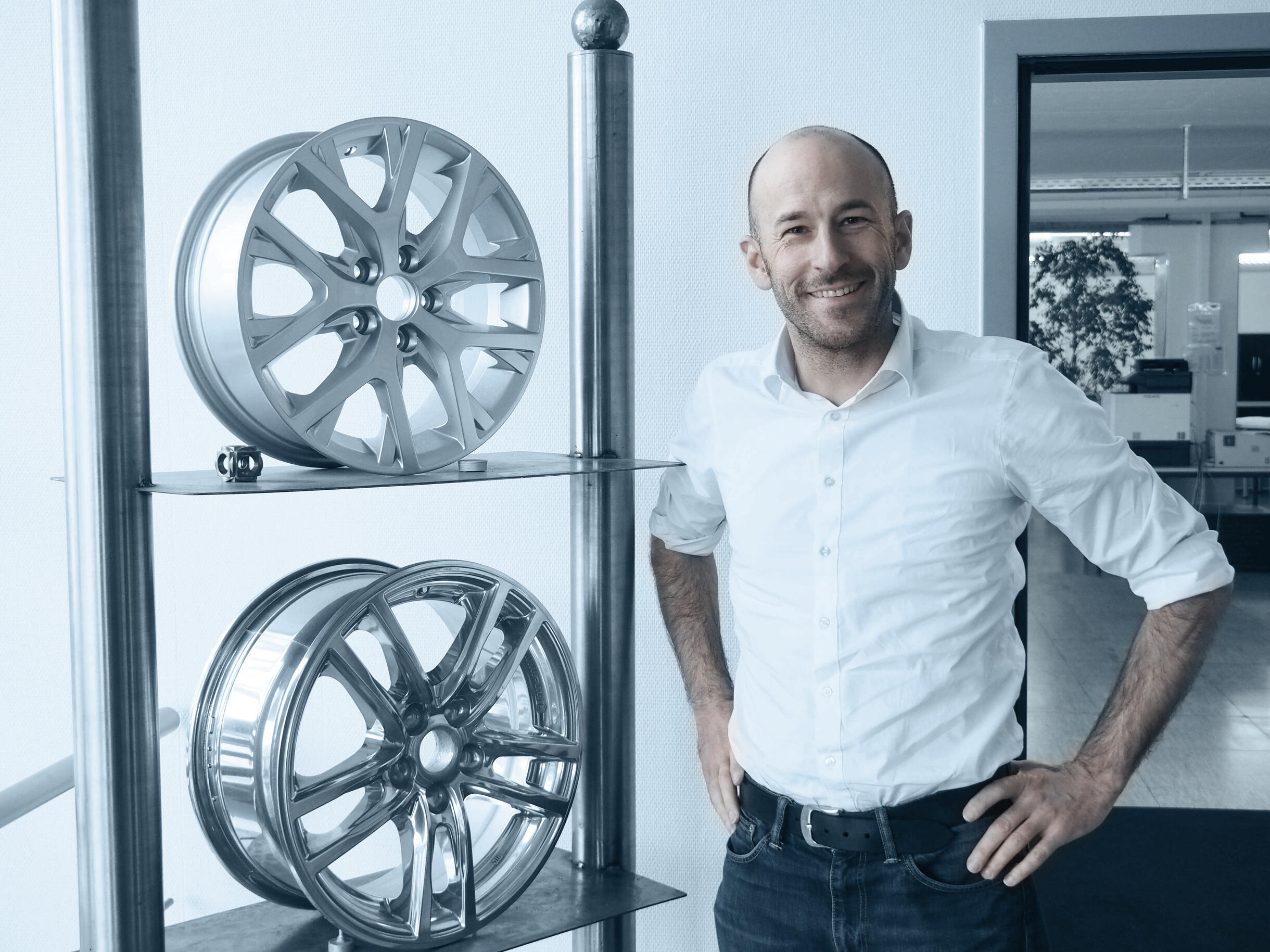
Milestones for the first 24 months
Tebis Consulting developed eight milestones for Walter Formenbau: Responsibilities, sequences and individual work steps are precisely defined in each process.
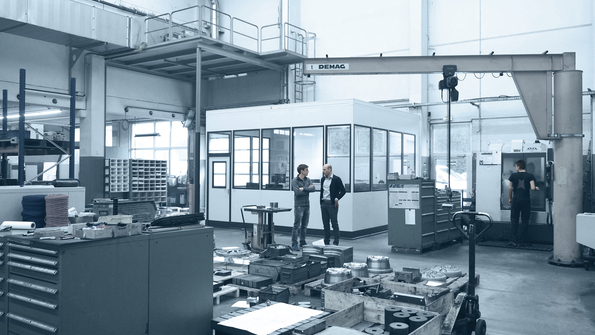
- 2.5D process: external CAM programming in Tebis, tool standardization, no manual reworking
- 3D process: external CAM programming in Tebis, 3D designs are assigned colors and features
- Paperless manufacturing: Viewers are installed on the machines, milling documentation reduced, expenditure for drawing creation reduced by 50 percent
- Setup process: new setup process with FCS system is introduced, setup logic integrated in the design, external setup areas implemented
- Planning and control: Preliminary project completed for ERP and MES introduction, planning running stably with Excel tables
- ERP and MES: ERP is selected and installed, ODA and MDA are installed and communicate with MES and ERP, ProLeiS PDM and MES are installed and are used consistently
- Automation of gravity die-casting molds for wheel rims: 6,000 spindle hours were achieved on a machining center; the entire process is automated from order receipt to the finish-milled part
- Integration of future-oriented technology: Augmented reality pilot project is complete, measurement on the machine and software-supported tool management are implemented.
In the beginning was the chart
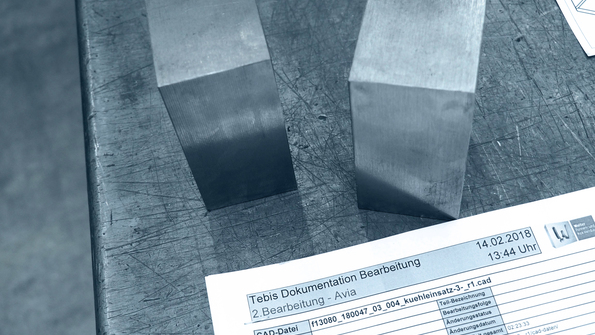
The consulting process started with a large chart: Lüdtke and Buchert's team used this to compile all the aspects needed for a die manufacturing company of the future. What do we want to achieve? Where do we want to be in five years? What investments have to be made? Which measures have which priority? How many employees with what qualifications are needed?
And the most important question: How can we, at the same time, keep our daily business running and making money so that we can also afford the investments? The rough outline then served as the basis for detailed planning.
A roadmap was developed with eight major milestones (see list on previous page). Targets were also defined for revenues, investments and machine run times. The work of Tebis started with the analysis of the current situation. The process experts spent two days in the company documenting workflows and processes for this. "We don't conduct individual interviews. Instead, we find a group of selected programmers, for example. This way we don't just get subjective opinions from an individual, but rather an overall perspective of the corresponding work area."
Change starting today: everything
After the analysis and definition of the first milestones, the new owner set to work with a will: Walls were torn down in the manufacturing building, machines had to make way for new ones, all documents and furniture were disposed of – changes that are not always easy for the employees. "I communicated with the employees a lot right from the start," stresses Buchert.
"We hold all-hands meetings roughly every six weeks. I also go through the plant every morning and greet everyone. This gives everyone the chance to speak their piece. However, we also have an external business psychologist who holds meetings with employees."
Buchert also introduced improved working conditions: This includes changes such as company cars or electric-powered company bikes, improved work materials and more flexible work schedules. New lighting or lifting tools were also implemented in production to improve convenience for employees. "We gained new employees and lost others," says the owner. "Despite this, we have always tried to involve the employees. We had at least five barbecues last summer. We do this to celebrate the acquisition of new machines, a running process – or just to show that we are making progress."
An interim evaluation
Yesterday, today and tomorrow
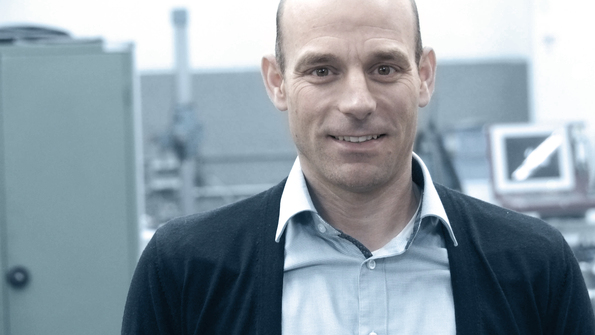
What has changed in the company over the last year? What can already be seen today of future plans? Taking stock: First the production building was renovated. "Before, there were partitions between individual work areas and convoluted paths, a certain confinement," says Buchert. "We removed walls, moved some machines and configured everything a bit more generously." A CAM office was set up in the middle of the building. Previously, programming was done directly on the machine, based on drawings.
Now, Tebis software solutions are implemented for 2.5D and 3D programming – executable, reliable complete programs are sent to the machines. Buchert explains the switch to Tebis software: "We wanted more than just a CAM software; we wanted an end-to-end solution. For us, Tebis is a process provider. As far as I know, they are the only provider in the industry from which we can obtain consulting, software and implementation from a single source." A further milestone in production is tool standardization. "In the past, the machine operator would often scrounge together the tools he needed," says Buchert.
"There were parts for which up to 16 different tools were used." Now, eight tools are usually sufficient. The milling tools to be used are defined in advance. "Our programming has also vastly improved," the managing director says. "We are now capable of generating run times of up to 30 hours in one stretch."
Using simple tools
And what about planning and control? Jens Lüdtke explains the use of "simple tools" for this: "Many people confronted by planning problems make a big mistake. They buy a planning system and think that they have solved the problem. But that's not how it works. The planning philosophy must first be integrated in the company. If planning doesn't work with the simplest tools, it's not going to work with software either." This means: The starting point is always a table in Excel. First the employees have to be brought on board and the philosophy established in their minds – step by step.
Walter Formenbau is just now at this point in the process. There are tracking cards for every part passing through manufacturing. And hanging next to every machine there is a whiteboard with a handwritten list of the current orders. Machine data acquisition is starting to be introduced in parallel with this. This is a small piece of the puzzle in the overall ProLeiS manufacturing management system that is being installed piece by piece and serves as the basis for networking the machines. An augmented reality pilot project was performed for optical quality control: The image of a real part is displayed on a tablet – superimposed with the CAD data. The user can thus perform a target/actual comparison, for example, on the part while it is clamped in the machine.
Money has to be made despite the many areas "under construction"
The company can also be proud of its economic situation: Despite large investments, Buchert managed to generate a profit situation and to increase annual revenues to €5.2 million. "We have put together a high-performance investment plan," explains Buchert. Over the next five years, we will invest over one million Euros every year – in setup equipment, machines and software. "And no matter what we do, it has to stay affordable for the company. Because we have to make money along the way."
A subsidy from the state of Baden-Württemberg helps a little. Jens Lüdtke, who is very familiar with the funding opportunities in Baden-Württemberg, prepares the application for this:
"This is certainly worth the effort. Depending on the project, a company can receive up to €40,000 per year in state funding."
Off to the future!
Finally, we'll take a look ahead: What does the future look like for Walter Formenbau? The team of Buchert and Lüdtke shares a clear common vision here: Motivated employees (they are not superfluous!) stand in a brightly lit manufacturing building with a white floor – and are very proud to be working in the die manufacturing company of the future. A die manufacturing company in which everything is clean and well-organized and where the work is automated and standardized. The software systems are networked together and ensure transparency in planning and manufacturing. It is also always possible to quickly intervene in the process and respond flexibly to short-term requirements. "I think that the most important parts are functioning processes and motivated employees," adds Buchert. "Everything else can be bought for money."
The above article is protected by copyright. All rights to the article are owned by Carl Hanser Verlag GmbH & Co. KG.
The licensee is granted the non-transferable right to publish the article as digital media on its own websites, by email and on data carriers.
Changes as well as transmittal of this article to third parties outside of the narrow limits of the copyright are not permitted.

